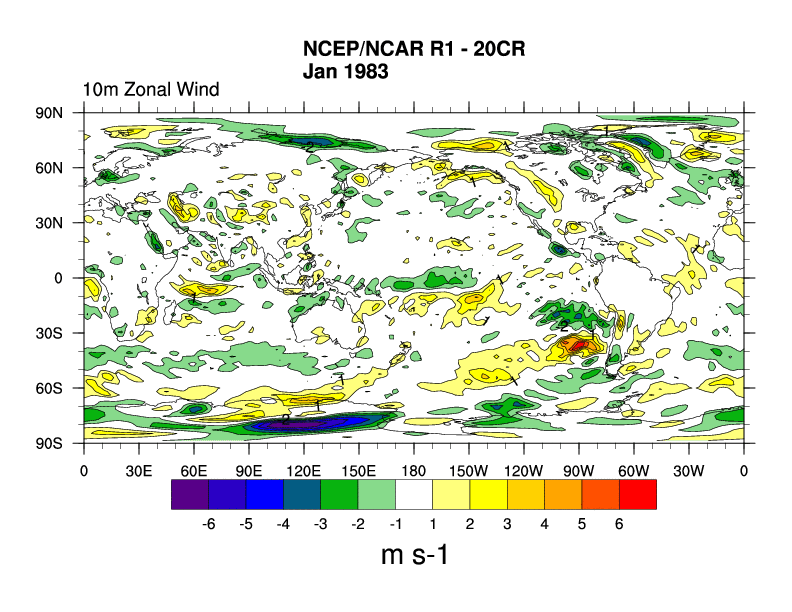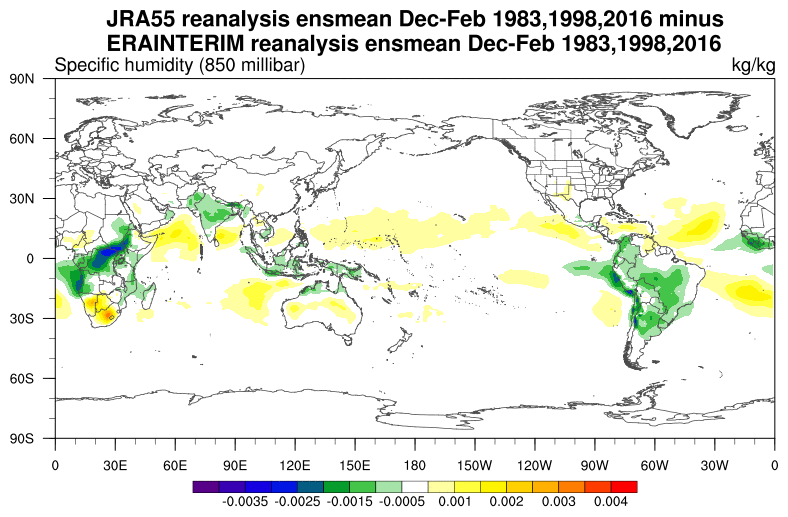Reanalysis Datasets at PSL
PSL maintains a collection of reanalysis datasets for use in climate diagnostics and attribution. Reanalysis datasets are created by assimilating ("inputting") climate observations using the same climate model throughout the entire reanalysis period in order to reduce the affects of modeling changes on climate statistics. Observations are from many different sources including ships, satellites, ground stations, RAOBS, and radar. Currently, PSL makes available reanalysis datasets to the public in our standard netCDF format. For some reanalyses, we don't distribute the data but do allow users to analyze and plot from it.
For more information and discussion of various atmospheric and oceanic reanalyses, see the "Advancing Reanalysis"
at Reanalyses.org.
PSL Public Reanalysis Dataset Collection
NCEP/NCAR Reanalysis I (1948-present)
This reanalysis was the first of it's kind for NOAA. NCEP used the same climate model that were initialized with a wide variety of weather observations: ships, planes, RAOBS, station data, satellite observations and many more. By using the same model, scientists can examine climate/weather statistics and dynamic processes without the complication that model changes can cause. The dataset is kept current using near real-time observations.NCEP/DOE Reanalysis II (1979-present)
NCEP produced a second version of their first reanalysis starting from the beginning of the major satellite era. More observations were added, assimilation errors were corrected and a better version of the model was used.NARR (1979-present)
The NARR reanalysis was done to produce very high resolution output over the North American region. Observational inputs were similar to NCEP I with the addition of assimilated precipitation. The NARR model region was nested in a global, lower resolution model. Outputs are similar to the NCEP I and II models but with more snow, ice and precipitation related variables.20th Century Reanalysis (V3, V2C, and V2) (1836-2015)
PSL began the 20th Century Reanalysis project in 2009. The project was based on the research results suggesting that using just surface pressure observations together with sea/ice boundary conditions as inputs to a climate model produces reasonable results up to the tropopause. There is even some correspondence with observed variations in the lower stratosphere. Because surface observations are available going back into the 19th and even 18th centuries, the project was able to model their 3D atmosphere far back in time. The 20th Century Reanalysis (20CR) project currently has three versions (3, 2c, and 2), each of which consists of of an “ensemble” of subdaily global weather conditions and their uncertainty. Surface and sea level pressure observations are combined with a short-term forecast from an ensemble of integrations of an NCEP numerical weather prediction model using an Ensemble Kalman Filter technique to produce an estimate of the complete state of the atmosphere, and the uncertainty in that estimate. The long time range of this dataset allows scientists to examine long time scale climate processes such as the Pacific Decadal Oscillation and the Atlantic Multidecadal Oscillation as well as looking at the dynamics of historical climate and weather events. The latest version, 20CRv3, assimilates more observations into a newer and higher-resolution weather model than 20CRv2c, and is available every three hours from 1836-2015. Many of these datasets can be subsetted, plotted and analyzed by our various web based tools. We also have two sets of tools that allow users to compare reanalyses. These include:
WRIT: Web-based Reanalysis Intercomparison Tools: Plots and Composites, time-series, correlations, trajectories and data distributions using multiple reanalyses and observation datasets. 
FACTS: Facility for Climate Assessments: Comparisons of reanalyses and an ENSO focused analysis page.